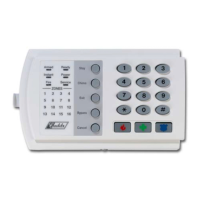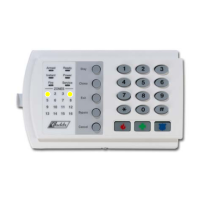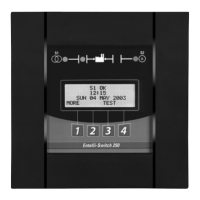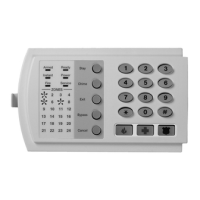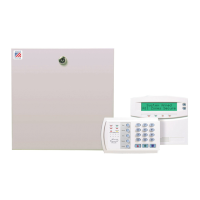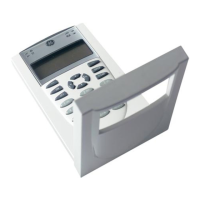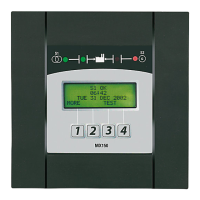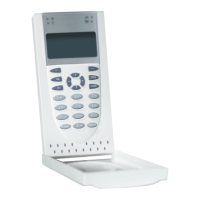Chapter 3: Programming
EST iO64 and iO500 Technical Reference Manual 135
Annunciator programming
Each annunciator on the annunciator loop must be programmed for
type, number of expanders, label, and event notification. Up to eight
annunciators can be connected on the loop and each must be
programmed separately.
Annunciator programming options
Type Set annunciator type to:
Off: No annunciator is connected. Note: If type is set to Off, Number expanders, Label, and
Reporting configuration are not available.
LCD-C: The annunciator has a display and common controls
LCD: The annunciator has a display only (no common controls)
LED: The annunciator has LEDs and common controls (no display)
Graphic: Graphics controller interface for the Envoy graphics board
Expanders Set expanders to None, 1, or 2. This is the number of LED expander modules you are using with
the annunciator.
Label Enter a text label for the annunciator (up to 40 characters and two lines). When finished, choose
Save.
Event notification Set the trouble event information by setting the notification information. When finished, choose
Save. See "Factory default settings" for annunciator event notification default settings.
Printer: Yes or No - Specifies if event information is printed
Coder: 4-digit coded output, which is played in response to alarm conditions (00-00-00-00 to
99-99-99-99)
Dialer:
Acct 1 & 2: Event information is sent to both dialer accounts
Acct 1: Event information is sent to dialer account one
Acct 2: Event information is sent to dialer account two
None: Event information is not sent to the dialer
NET: Yes or No. Specifies if event information is sent to the connected network
CID: Contact ID event code (000 to 999)
Panel Configuration
Panel NAC
Ann. Class A<>
Annunciator
⇩
Annunciator
Annunciator 01
Annunciator 02
Annunciator 03
To program an annunciator:
1. Access the panel configuration options menu. See "Panel
configuration options."
2. Choose Annunciator.
3. Choose the annunciator you want to program.
4. Program each annunciator in your system using the
"Annunciator programming options" table above.
⇩
